Starting from 2 June 2021 importers and manufacturers of chemical products are to comply with the provisions of Technical Regulation on Safety of Chemical Products (TR EAEU 041/2017) – “TR”. The purpose of the adopted TR is protection of life and health of the EAEU population as well as of the environment and prevention of consumer misleading regarding the application and safety of chemical products.
The TR sets out the procedure for the creation and maintenance of a chemical substances and mixtures registry as well as the new substances notification procedure for the whole EAEU territory.
The TR applies to all chemical products released into circulation in the EAEU, except for products listed in Annex 1 (e.g. chemicals intended for research purposes, medicines and veterinary preparations, subsoil resources, cosmetics, chemicals that are sources of ionising radiation, food, and so on).
According to the Decision adopting the TR, the EurAsian Economic Commission, together with the Governments of the EAEU Member States, is required to develop both these procedures and ensure that they enter into force before 1 December 2018.
The TR applies to chemical products manufactured in the EAEU. It also contains the rules and methods for conformity assessment, rules for chemical product identification rules, terminology, rules for labelling and so on.
The TR requires that the authorities are to establish the single registry of chemical mixtures and substances that are manufactured and used in the EAEU countries. The Registry will also contain the information on any restrictions, permissions or prohibitions associated with the use or manufacture of such substances.
All substances are to be classified in accordance with their hazardous properties. There will be thirteen classes of substances. Such classes include explosives, compressed (liquefied) gases, flammable gaseous chemicals, self-degradable and self-heating chemicals, chemical products that become dangerous when in contact with water, and so on. Substances that have been included in the Registry will receive a state registration certificate.
The TR (part VII) imposes labelling requirements for chemical products. Labelling must include the following information:
- name of chemical product which can additionally include its trade name;
- name and location (registered address), including the country, a telephone number of the manufacturer (authorised representative) and the importer of the chemical product;
- names of substances and mixtures classified as hazardous contained in a chemical product in quantities exceeding the concentrations specified in the standards included in the list of international and regional (intra-state) standards (in the absence of which – national standards) the use of which on a voluntary basis ensures compliance with the TR requirements;
- storage conditions and the manufacturer's warranty (shelf life, expiry date, etc);
- name of the document in accordance with which the chemical product was manufactured (if applicable);
- information on the product’s hazardous properties, including warning marking.
The label must be in Russian language and, if there are any national language requirements – also in the language or languages of the member state where the product is distributed. The label must be legible and understandable and also resistant to mechanical stress, chemical impact and climatic conditions. It must remain intact during the whole period of use until the product’s utilisation or recycling.
Manufacturers (or their authorised representatives) or importers are required to perform chemical product identification in order to identify whether the product is a “chemical product” for the purposes of the TR and to identify any chemical products with hazardous properties. The identification procedure is prescribed by Part III of the TR.
Part IV of the TR sets out the requirements for placing chemical products on the market. Chemical products may only be placed on the EAEU market if they comply with the provisions of the TR and other TRs of the EAEU that are applicable to the products in question.
Manufacturers (their authorised representatives) or importers must perform classification of their chemical products. Classification is to be carried out in accordance with certain international and regional (interstate) standards If there are no such standards then national standards are to be used.
Part IX of the TR contains requirements for the material safety data sheet (also called “chemical product safety passport” or MSDS). The economic operator that places a chemical product on the market (i.e. the manufacturer/authorised representative or the importer) is required to develop an MSDS for any product they place on the market. The structure and contents of an MSDS are prescribed by the standards GOST 30333-2007. An MSDS does not have an expiry date and is valid for an indefinite period. An MSDS must be updated or revised in certain circumstances, such as change of product’s composition, change of the manufacturer’s name and/or address, etc.
Law: Decision No. 19 of 3 March 2017 on the Technical Regulation on Safety of Chemical Products.





